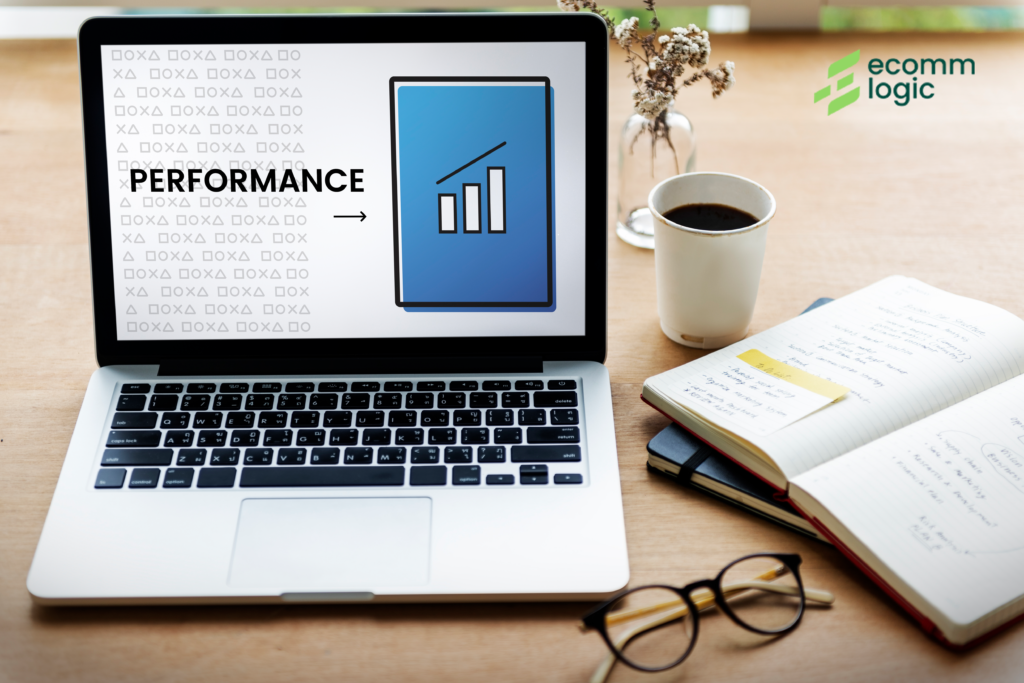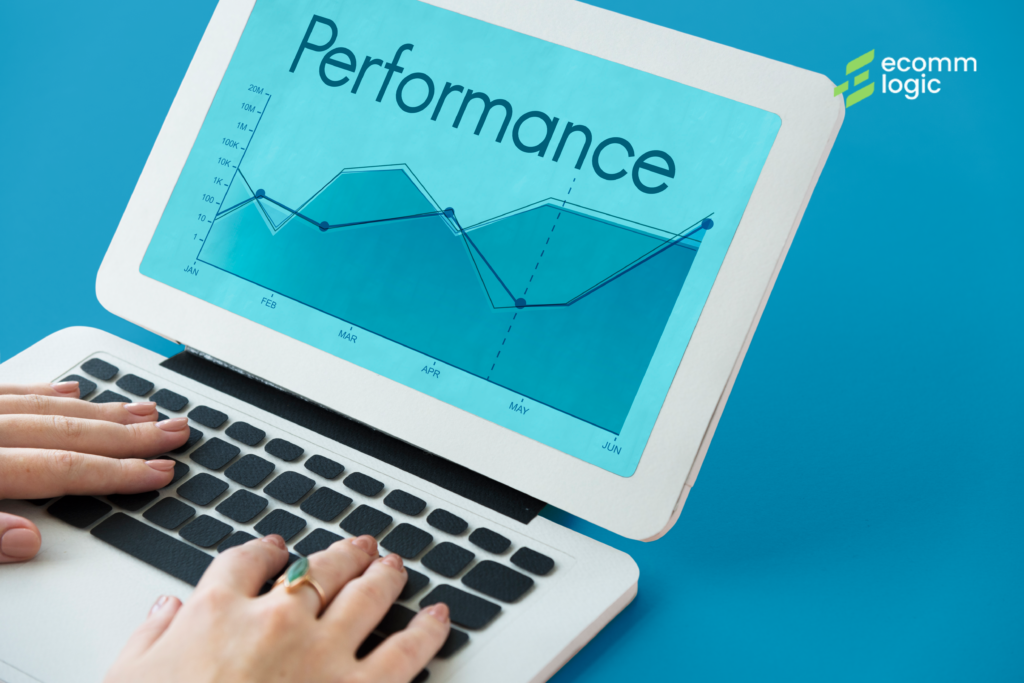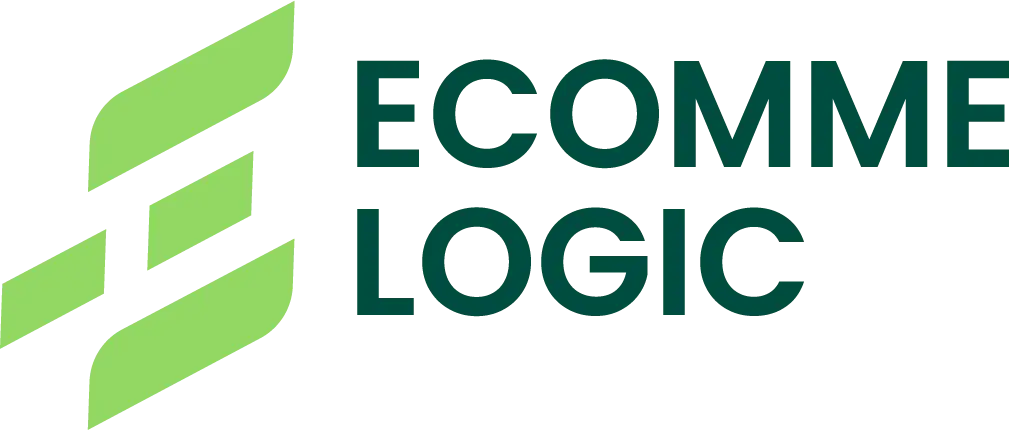Why Website Speed is the Cornerstone of E-Commerce Success
In today’s digital commerce landscape, where consumer patience wears thin in milliseconds, website performance has become a decisive competitive advantage. Research from Google reveals that 53% of mobile visitors will abandon a site that takes longer than three seconds to load, while Amazon found that every 100ms of latency costs them 1% in sales. These statistics underscore a fundamental truth: speed directly correlates with revenue, customer retention, and search engine visibility.
At EcommeLogic, we’ve observed that businesses investing in performance optimization typically see conversion rate improvements of 15-20%, along with significant boosts in customer satisfaction metrics. The following comprehensive guide outlines the most effective strategies we’ve implemented to transform sluggish online stores into high-performance sales machines.

1. Selecting the Right Hosting Infrastructure
The foundation of any fast e-commerce website begins with robust hosting infrastructure. While shared hosting solutions may appear cost-effective initially, they often lead to unpredictable performance during traffic spikes and security vulnerabilities. We recommend migrating to Virtual Private Server (VPS) or dedicated hosting solutions that provide guaranteed resources and better isolation from other websites.
For businesses experiencing rapid growth or seasonal traffic surges, cloud hosting platforms like AWS, Google Cloud, or specialized e-commerce solutions such as Shopify Plus offer unparalleled scalability. These platforms automatically allocate additional resources during peak periods while maintaining consistent performance. When evaluating hosting providers, prioritize those offering SSD storage, HTTP/3 protocol support, and geographically distributed data centers to minimize latency for global customers.
2. Advanced Image Optimization Techniques
Visual content plays a crucial role in e-commerce conversions, but unoptimized images remain one of the most common performance bottlenecks. Modern optimization goes beyond simple compression, requiring a strategic approach to visual assets. We implement next-generation WebP image formats that typically reduce file sizes by 25-35% compared to traditional JPEGs while maintaining visual fidelity.
Progressive loading techniques ensure visitors see placeholder content immediately while higher-resolution images load in the background. Responsive image solutions using the srcset attribute deliver appropriately sized files based on each visitor’s device, preventing mobile users from downloading desktop-sized assets. For stores with extensive product catalogs, we recommend implementing lazy loading that only requests images as they enter the viewport, dramatically reducing initial page weight.
3. Streamlining Front-End Code Efficiency
The modern e-commerce website relies on complex JavaScript frameworks and CSS libraries that, if not properly optimized, can significantly impair performance. Our optimization process begins with comprehensive code audits to identify redundant scripts, unused CSS rules, and inefficient DOM manipulations. Through minification tools like Webpack and UglifyJS, we strip all unnecessary characters from code files without affecting functionality.
A critical aspect of front-end optimization involves intelligent script loading strategies. We prioritize above-the-fold content by deferring non-essential JavaScript and inlining critical CSS. For stores using CMS platforms like WordPress or Magento, we implement code splitting techniques that load functionality on-demand rather than delivering monolithic JavaScript bundles. These optimizations typically improve Time to Interactive metrics by 40-60%, creating a more responsive shopping experience.

4. Implementing Global Content Delivery Networks
As e-commerce businesses expand their geographic reach, the physical distance between servers and customers becomes an increasingly significant performance factor. Content Delivery Networks (CDNs) solve this challenge by caching static assets across a distributed network of edge servers. When a customer in Tokyo accesses a store hosted in New York, the CDN serves images, stylesheets, and scripts from the nearest Asian node rather than traversing intercontinental cables.
Modern CDN solutions like Cloudflare and Fastly offer additional performance enhancements through HTTP/3 protocol support, which reduces connection establishment time, and intelligent caching policies that adapt to changing content. We typically configure CDNs to cache static assets with long expiration times while implementing cache invalidation protocols for dynamic content. This combination ensures customers always see the most up-to-date product information without sacrificing speed.
5. Comprehensive Caching Strategies
Effective caching implementation can transform a sluggish website into a lightning-fast shopping destination. We architect multi-layer caching solutions that operate at the server, CDN, and browser levels. Server-side caching mechanisms like Redis or Memcached store database queries and rendered pages in memory, eliminating repetitive processing for common requests.
Browser caching represents perhaps the most impactful optimization for returning customers. By configuring proper Cache-Control headers, we ensure static assets remain locally stored for extended periods, enabling near-instantaneous page loads on subsequent visits. For progressive web applications, we implement service workers that enable offline functionality and background content preloading, creating app-like experiences that keep customers engaged even in low-connectivity scenarios.
6. Strategic Plugin and Third-Party Script Management
The convenience of plugins and third-party services often comes at a significant performance cost. Our audit process identifies redundant or inefficient plugins that contribute to bloated page sizes and excessive JavaScript execution. For essential third-party services like analytics, payment processors, and chat widgets, we implement intelligent loading strategies that prevent these scripts from blocking page rendering.
In many cases, we consolidate multiple functionalities into custom-coded solutions that provide the same features with significantly better performance. For example, replacing several separate marketing plugins with a well-optimized custom integration can reduce JavaScript payloads by 50% or more. We also implement resource hints like preconnect and dns-prefetch to reduce the latency impact of necessary third-party connections.
7. Mobile-First Performance Optimization
With mobile commerce now representing the majority of online transactions, we prioritize mobile performance above all else. Our optimization process begins with thorough testing across various devices and network conditions, identifying pain points specific to mobile users. We implement responsive design principles that go beyond simple layout adjustments, including touch-optimized interface elements and mobile-specific image variants.
Accelerated Mobile Pages (AMP) technology can dramatically improve loading times for key landing pages, though we carefully evaluate the trade-offs with dynamic functionality. For stores targeting emerging markets where mobile networks are slower, we implement additional optimizations like simplified layouts, reduced JavaScript dependencies, and aggressive caching strategies that account for intermittent connectivity.

8. Continuous Performance Monitoring and Improvement
Website optimization is not a one-time project but an ongoing process of measurement and refinement. We establish comprehensive monitoring systems that track real-user performance metrics across all visitor segments. Tools like Google’s Core Web Vitals reporting, New Relic, and custom synthetic monitoring provide actionable insights into performance trends and regression points.
Our optimization cycle includes regular A/B testing to validate performance improvements against business metrics, ensuring that technical enhancements translate to measurable revenue growth. We establish performance budgets that prevent feature creep from gradually degrading site speed, and implement automated testing pipelines that catch performance regressions before they reach production.
The Competitive Advantage of Speed
In an industry where milliseconds translate to millions in revenue, investing in website performance delivers one of the highest ROIs in e-commerce. Our clients consistently report double-digit percentage increases in conversion rates, reduced customer acquisition costs, and improved brand perception after comprehensive optimization initiatives.
Beyond the immediate financial benefits, fast-loading websites enjoy compounding advantages in search engine rankings, customer loyalty, and mobile market penetration. As consumer expectations continue to rise, performance optimization moves from competitive differentiator to business necessity.
At EcommeLogic, we combine technical expertise with deep e-commerce experience to deliver tailored solutions that drive real business results. Our performance optimization services begin with a comprehensive audit identifying your most impactful opportunities for improvement. Contact us today to schedule your free consultation and take the first step toward transforming your online store’s performance and profitability.

